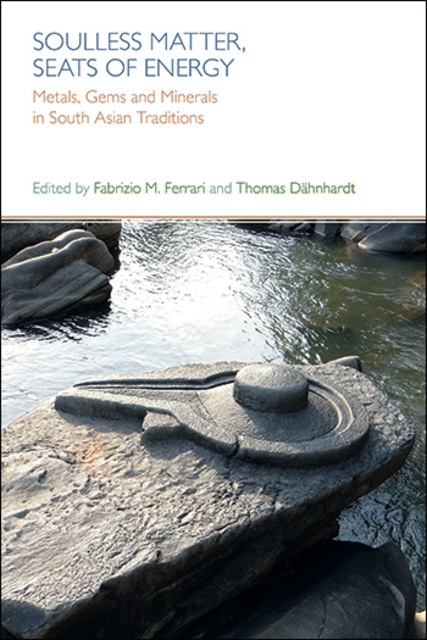Ferrari & Dähnhardt/Soulless Matter, 3. A “Sulphurous” Śakti

Full description
Hiṅgulā is a Śākta goddess associated with underground fire, volcanic activity, and jets of flammable gas on the Makran coast of Pakistan and in Orissa. Her shrine in Makran is the westernmost among the Śākta-pīṭhas. Known to her Muslim devotees as Bībī Nānī, Hiṅglāja (Hiṅgulā) of Makran is connected by some scholars with the Iranian goddess Anāhitā worshipped by the Śakas and Kuṣāṇas and, through the latter, with the Mesopotamian/Elamite/Bactrian goddess Nanā. Hiṅgulā’s Sanskrit name means ‘she of cinnabar’. Cinnabar, hiṅgula, is a reddish ore consisting mainly of red sulphide of mercury (HgS) deposited in rocks from volcanic activity. As a pigment, cinnabar has been used in South Asia from very early times to besmear the cult icons of Hindu divinities. According to the principles of Tantric alchemy, sulphur symbolizes Śakti and menstrual blood, while mercury symbolizes Śiva and male seed. The alchemical union of sulphur with mercury, resulting into cinnabar, is regarded as the most powerful panacea by the Tantric tradition. Likewise, in Indian medicine cinnabar is attributed aphrodisiac properties. The “sulphurous” qualities of hiṅgula or cinnabar are easily associated with volcanic and gas-jet phenomena in mythological thought. In Makran, believed to be the place of origin of this Śākta cult, the shrine of Hiṅglāja is located in an area rich in mud volcanoes at times erupting with flaming gas. Some other Śākta goddesses in N.W. South Asia — e.g., Jvālāmukhī in Himachal Pradesh — are represented by ignited jets of natural gas issuing from the ground or from rocks. The worship of Hiṅgulā has, in course of time, migrated from Makran/Sind to Gujarat and Maharashtra, perhaps following the migrations of Hindu nomadic castes of north-western origin. In eastern Maharashtra and Bastar, Hiṅgulā may have been a family deity of the Nala dynasty in the post-Gupta period. In a later epoch she began to act as the family deity of the rājās of Talcher in central Orissa. Here Hiṅgulā is believed to appear a few days before her annual festival in the dream of her temple priest and to indicate to him the exact spot of her manifestation as a jet of gas issuing from the local coal fields. The priest then proceeds to the spot and finding the natural fire, keeps the flame burning by adding coal till the appointed hour of worship arrives. The present paper is a first attempt at discussing the polarity of sulphur vs. mercury, the symbolism of cinnabar, and the worship of volcanic and gas-jet phenomena against the background of the cult of Hiṅgulā.
- typeImage
- created on
- file formatjpeg
- file size91 KB
- container titleSoulless Matter, Seats of Energy: Metals, Gems and Minerals in South Asian Traditions
- creatorFrancesco Brighenti
- isbn9781781794364 (eBook)
- publisherEquinox Publishing Ltd.
- publisher placeSheffield, United Kingdom
- rightsEquinox Publishing Ltd.
- doi
We use cookies to analyze our traffic. Please decide if you are willing to accept cookies from our website. You can change this setting anytime in Privacy Settings.
